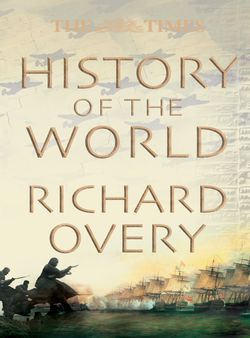Читать книгу The Times History of the World - Richard Overy - Страница 35
336 TO 30 BC THE HELLENISTIC WORLD
ОглавлениеAlexander the Great’s conquest of the Persian empire transformed the eastern Mediterranean and Middle Eastern world. The spread of Greek culture and political organisation which followed in his wake shaped the region for a millennium. Greek became the common language, and the city-state the common form of social organisation.
Along with the kingdom of Macedon, in 336 BC Alexander inherited from his father the leadership of a league of Greek states that he had intended to use to campaign against the Persian empire. Through his ambition and brilliant generalship, by the time of his death less than 13 years later at the age of 32, he was recognized as legitimate ruler of an empire stretching from Egypt to India. From the moment he died there was competition between his closest companions and generals. Until the assassination of Alexander’s young son in 307 BC, the contenders, for all that each had ambitions to take over the whole empire, could at least claim to be acting as regents. Thereafter, they were fighting for themselves, rapidly styling themselves as kings, and attempting to carve out areas of personal influence. By 276 BC, a division of the empire into three main kingdoms—Antigonid Macedon, Seleucid Asia and Ptolemaic Egypt—had been established.
CULTURAL LIFE IN THE SUCCESSOR STATES
The basic political units of these new kingdoms was the city-state, some nominally independent, but most owing allegiance to one of the successor kings. The cities of old Greece, such as Athens, retained their prestige, but they were eclipsed by the newly created or reorganized cities of the east, named inevitably after their founders or rulers: Alexandria, Seleucia, Antioch. The new cities had all the elements of their older counterparts, with gymnasia, theatres and temples to the gods, and regular festivals, some including athletics, which might be attended by Greeks from far afield. Citizenship was restricted almost entirely to the Greek and Macedonian minority, and the land was in the hands of citizens or of the kings and their friends. The local populations might farm the land as tenants or as labourers, but they were excluded from administrative positions. The network of cities helped the spread of a common Greek culture and language throughout the region: Clearchus, a pupil of Aristotle, brought a collection of maxims from Delphi in central Greece to the city of Ai Khanoum in eastern Afghanistan. In a number of cities, but above all in Alexandria, with its access to papyrus, and Pergamum, from where parchment got its name, the kings established great libraries, and these became centres for literary work.
Even before Alexander’s conquest, some communities within the Persian empire had adopted aspects of Greek culture. This “Hellenization” continued, at least among the elites: conflict between “Hellenizers” and “traditionalists” in the 2nd century led to violence in Jerusalem. However, especially in Seleucid territories, elements of older cultures, including cuneiform writing, remained important, and in those areas which were to become the Parthian empire (see p. 57), Greek culture was never firmly established.
There were advances in geometry and mathematics, especially with Euclid of Alexandria and Archimedes. The great Alexandrian librarian, Eratosthenes of Cyrene, attempted with some success to calculate the circumference of the earth. However, this was not a period of great technological change. The basis of the Hellenistic economy was agriculture, and this changed little. Merchants continued to trade, and writers of the time praise the range of goods available in the great cities, but there is evidence too of an increasing gulf between rich and poor. Only in warfare were there major developments, with the creation of ever more advanced artillery and siege engines, and the introduction by the Seleucids and the Ptolemies of elephants onto the battlefield.
From the late 3rd century, a new player entered the game. Threats to Roman operations in the Adriatic, and Macedonian support for the Carthaginian Hannibal, led to a Roman invasion of Greece and Asia Minor. The Macedonian phalanx proved inferior to the Roman legions.
THE GROWTH OF ROMAN POWER
Wars gave Roman commanders an opportunity for booty and glory, and initially they withdrew their forces after each campaign; but as Rome acquired more allies in the east, the reasons for maintaining their presence grew. After the battle of Pydna (168) the kingdom of Macedon was divided into four independent republics. 18 years later it was made a Roman province. The involvement of Cleopatra VII in the civil war between Mark Antony and the future emperor Augustus led after the battle of Actium (see p. 75) to the Roman annexation of Egypt, the last major successor kingdom. A few small client kingdoms, tolerated by the Romans for a while, were all that remained of Alexander’s territorial inheritance.
